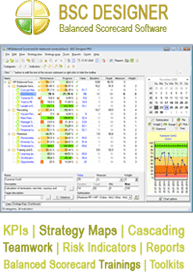Scorecard Benchmarking For Competitive Advantage and Internal Business Stability
Business is to a certain extent a competitive and challenging field, for assorted reasons. One, obviously, is because of the number of participating business organizations and foundations, which as expected encourages competition for the limited amount of possessions to be had. Another set of rationales is the truth that it time and again is difficult to only stay afloat as a corporation, even taking no notice of the consequence of challenging business organizations. It takes sound manipulation and outstanding implementation for any association to stand an opening to dip in the waters of the corporate world, which can be intimidating to the new and ill-equipped. Scorecard benchmarking is a tactical tool that can to a great extent boost the perspectives of an organization success.It involves four key perspectives: Financial perspective, Customer perspective, Growth & Development perspective, and the Internal Business Processes perspective. Benchmarking, alternatively, refers to evaluating quantities with definite standards, which may certainly fluctuate. The scorecard is one way of gauging performance, and therefore can be of colossal use in any benchmarking process or line of attack. Different types of benchmarking may be accomplished: internal, competitive, functional, and generic. Internal benchmarking would show the evaluation of processes and results between the dissimilar units of a solitary organization and company. This is more often than not done to regulate and rationalize results and procedures within the corporation itself.Competitive benchmarking, deals as an alternative with comparing a company’s output and productivity with other companies in rivalry with it. This is time and again executed with an eye towards not only corresponding but exceeding these other groups’ efficacy as shown by the benchmark judgments. Functional and generic benchmarking would show the comparison between parallel and disparate business organizations and entities. In actual fact, these processes can be helpful not only in continuing strategic planning, but also in short term implementation. A hefty venture may be more effortlessly divided into less significant sub-projects, which would after that be assigned to dissimilar teams. The consequences and productivity of each slighter part may be measured up to and assembled using scorecard benchmarking. This would allow the human resource managers to have a assured and clear-cut clutch on each facet of the large venture. This would improve effectiveness and allow for the quick and precise communication of the needs and conditional alterations in each sub side. By letting such a division of labor to take place and still be administered successfully, such scorecard evaluation strategies significantly increase yield. The appropriate use of these tools and technologies would be a great addition to any corporate executive’s strategic and deliberate munitions store.


